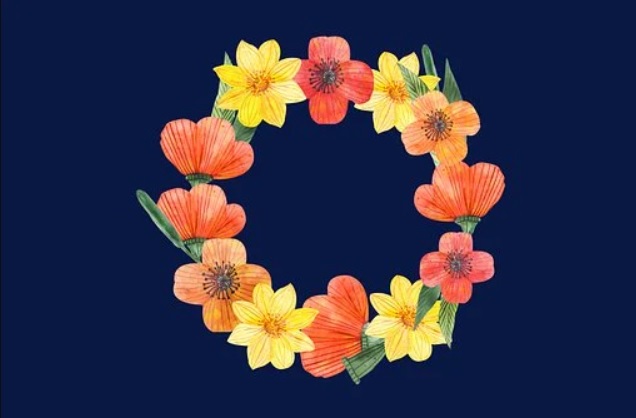The Art Nouveau movement (1890-1914) coincided with a period of the most extraordinary population explosion in history.
Flowers were used as intricate and exquisite motifs to adorn all available surfaces: wallpaper, jewelry, clothing. Flowers in art were a way for artists to celebrate the beauty and wonder of nature.
Here are some of the most influential works from that time, which prompted the use of flowers as motifs in the art after that:
“Willendorf Goddess.” (c. 24,000 BCE)
This paleolithic statue near Willendorf, Austria, is over twenty-five thousand years old. She is considered to be the oldest depiction of the female body. Her exaggerated breasts and hips, combined with a noticeable lack of feet or facial features, lead many scholars to believe she was used as a fertility figure.
This ancient artifact shows that flowers have long inspired art, whether it was a conscious decision or not. Flowers for art are only a recent development in a long tradition.
“La Vierge aux Rochers.” (c. 1310-1375)
La Vierge aux Rochers is a painting of the Madonna and Child by French artist Enguerrand Quarton, painted c. 1350. Mary kneels on the grass with an arrangement of red carnations behind her; she appears to be caressing the stem of one.
Her long dress also features intricate floral designs at the hems, adding to the overall beauty of this oil on panel painting. Floral arrangements of this age are different from those you can find today from The Bouqs Co.
The iconic artwork from the Middle Ages features gothic-style red carnations that have been bisected at the waist.
Yayoi Kusama Bedroom Painting. (1991)
Though this painting is not from the Art Nouveau period, it does feature a flower in its center: a red acorn blossom that Yayoi Kusama painted directly on the ceiling of her bedroom in Tokyo during 1991.
To create kaleidoscope impressions, she frequently paints polka dots and flowers on flat surfaces. Kusama has admitted that she has never even seen an acorn in real life, but that did not stop her from painting them down on herself every day when she was a child.
“The Birth of Venus.” (c. 1486-1487)
This painting is one of the most famous paintings by Italian Renaissance artist Sand to Botticelli. The iconic scene features Venus, the goddess of love; she is wrapped in her famous orange scarf and emerging from the water with pink flowers strewn behind her.
This painting helped rekindle interest in flowers used as motifs for art, starting with French artist Jean Auguste Dominique Ingres.
“A Bouquet of Sunflowers.” (1888)
This painting by Vincent Van Gogh depicts a vase filled with sunflowers, a flower representing happiness and abundance. He completed it in only two weeks during 1888 when Van Gogh was living with his brother in Paris. This painting is the first one to feature sunflowers prominently.
“La Danse.” (1899)
Henri Matisse’s “La Danse” featured a large tree directly through its center, surrounded by women wearing tunics and flowers in their hair. This painting is a prime example of the Art Nouveau movement’s significant themes: femininity, nature, and sexuality.
“The Dance.” (1909)
Edgar Degas’ “La Danse” featured similar inspiration from The Nabis artists’ love for flowing lines and flat surfaces. In this painting, he goes a step further and creates an almost mirror-like effect on both the floor and the wall. The Dance here refers to an impromptu dance in a flower garden.
Though flowers have always inspired artists in paintings and sculptures, they did not become a motif for art until the late 1800s. The bouquets of flowers in pictures helped inspire sculptures and other works of art for years after artists painted them.
Artists found new ways to paint flowers on flat surfaces instead of using them as two-dimensional objects. The Nabis artists inspired many generations of artists to use flowers as inspiration for their works. Still, the most influential work was The Birth of Venus, painted by Sandro Botticelli c. 1486-1487.























